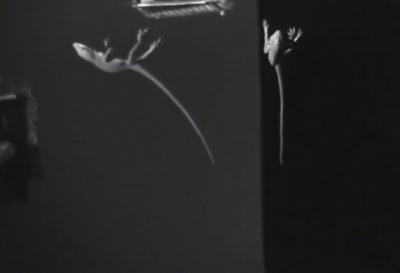By Kalwinder KaurJul 2 2012
By swinging their large tails one way, lizards turn around their body the other way. The momentum and the related movement of lizards have been reported in a recent study that was presented on 29th June during at the Society for Experimental Biology meeting in Salzburg, Austria. 'RightingBot', a lizard-inspired robot replicates this approach.
 Falling lizards use tail for mid-air twist, inspiring lizard-like 'RightingBot'
Falling lizards use tail for mid-air twist, inspiring lizard-like 'RightingBot'
Ardian Jusufi, Robert Full and colleagues at the University of California, Berkeley have conducted this initiative to study the motion behavioral patterns of large-tailed animals to rotate right side up during the free fall. By using this behavioral approach, engineers can design and construct highly stable air- or land-based robots.
Lizards in their natural environment are likely to fall in various situations like while mating, fighting over territory, and while in search of food. Rotational movement during fall will prevent the lizards from injuries, thereby enabling them to safely land on feet.
Under high-speed videography, the researchers carried out motion analysis by dissecting two common lizards such as the green anole and flat-tailed house gecko. After acquiring an erect position in mid-air, the lizards landed on extended legs. According to the researcher’s analysis, both lizards swing their tails in one direction, enabling the rotation of their bodies.
The researchers also evaluated the righting movement of the two lizards, representing varied tail lengths and inertial properties and similar body sizes. The short-tailed gecko will swing further to the side to right using its tail, creating a larger angle associated to its body. The reduced movements of the anole tail enable reorientation of its body.
Jusufi and his colleagues created a 3-D mathematical model to analyze and scrutinize the lizards' righting movement, and then constructed a simple robot. 'RightingBot' is made up of only two parts, wherein a body is joined to a tail. RightingBot rights in the mid-air and demonstrates the importance of tail for swinging purposes.
Disclaimer: The views expressed here are those of the author expressed in their private capacity and do not necessarily represent the views of AZoM.com Limited T/A AZoNetwork the owner and operator of this website. This disclaimer forms part of the Terms and conditions of use of this website.